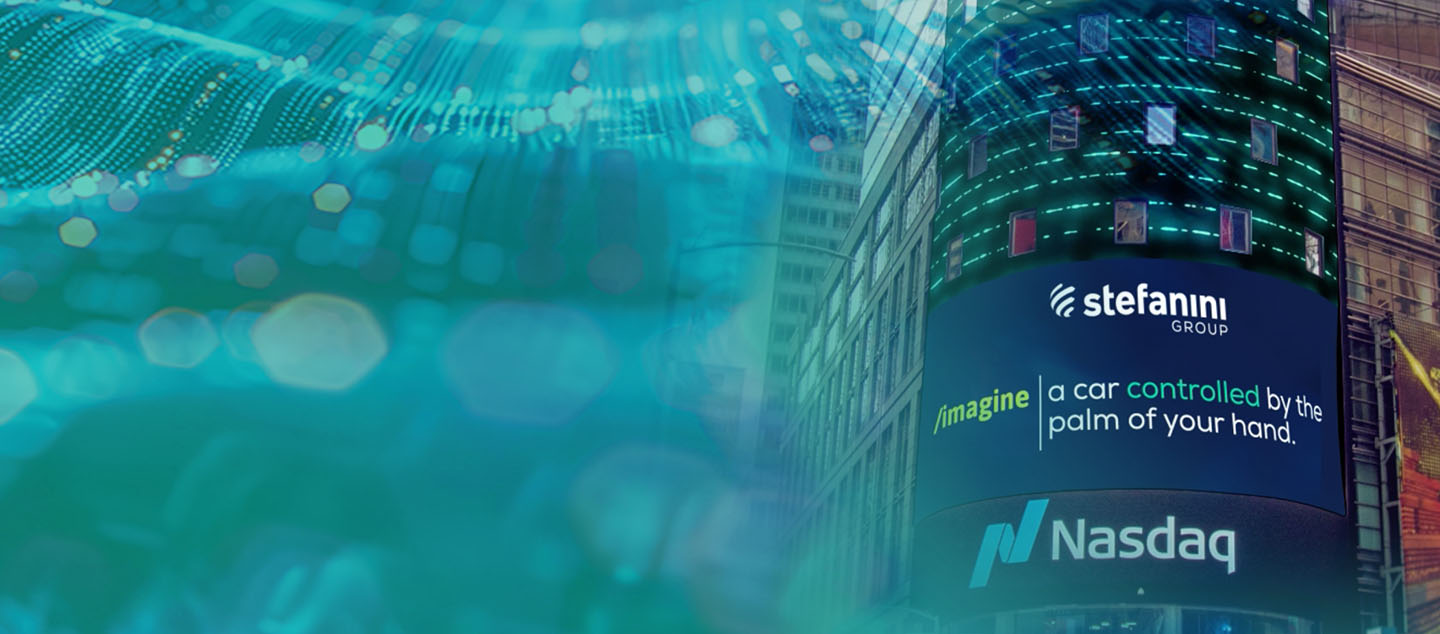Having a social listening strategy in place is a valuable tool for improving your customer experience. Social media listening tools help marketers and businesses understand how their audience and potential customers think and feel about their products and services on social media.
Furthermore, social listening tools give marketers a window into how their audience feels about the competition. The information gleaned from social listening data is worthwhile when gathered in real-time.
What is social listening?
Social listening is tracking social media channels and can be summed up in two steps:
- Monitor social channels for:
- Mentions of your brand
- Mentions of your competitors
- Mentions of your products
- Keywords related to your business
- Gather the information and analyze it to create an actionable plan. Steps in the plan can include responding to satisfied customers or, if needed, repositioning your brand.
Social listening vs. social monitoring
Social listening and social monitoring sound like the same thing. However, they are two different concepts. Social media monitoring refers to data collection – it offers a snapshot of past performance using metrics like:
- Brand mentions
- Relevant hashtags
- Competitor mentions
- Industry trends
Monitoring a brand on social media helps to keep track of ROI and A/B testing campaigns. Also, it offers helpful information regarding the value of social media campaigns. This is particularly useful when planning a yearly budget.
Consider that data in the form of numbers is part of the picture. If a post receives much positive engagement, it’s not great if that post attracts negative attention. Social listening goes further than monitoring – it offers a picture of social sentiment.
Social media sentiment analysis is an essential piece of social listening. It helps marketers understand how your audience feels about your brand and how they feel about your competitors. Rather than adding up how many times your brand is mentioned, social listening helps you drive results.
Furthermore, active listening can show shifts in social sentiment, which helps marketers and brand managers respond quickly if the data shows an unexpected change.
In summary, the difference between social monitoring and listening is this:
– Social monitoring is a snapshot of what occurred in the past
– Social listening looks toward the future and to the past. The key is analyzing collected information and using that data to guide a marketing strategy and daily actions.
How a social listening strategy helps improve customer experience
Creating a brand strategy without social listening is like wearing a blindfold. People converse about your business and industry online. It makes sense to know what they’re saying. Caring about your customers is caring about social insights.
Here are ways social listening benefits your organization:
Understand and engage with your audience
For example, a customer may tweet how much they like your product. Or, you may see a conversation between two people looking for solutions to an issue your products can solve.
Brands like Trader Joe’s are known for excellent customer service. If you tweet a photo of your favorite Trader Joe’s product, the brand will likely retweet it. Brands also watch for conversations where people recommend their products or service.
Industry and Competitor Intelligence
More than understanding what people are saying about your brand, social listening gives you an idea of what they are saying about competitors and your industry in general. This is great for getting insights into where your products or services fit into the market.
Furthermore, social listening shows what your competitors are doing in real-time. Do they have a hot new ad campaign? Do they have high-performing products? These conversations will likely offer a marketplace gap where your brand can fit. Finding opportunities and detecting threats helps marketers and brand managers respond quickly.
Product Intelligence
Keeping track of online conversations around your industry offers a picture of what works or what does for your current and future customers. This picture provides a treasure trove of information for your customer service, product developers and marketing teams.
Nike is a brand that consistently turns social media monitoring and social listening into unrivaled customer experience and service. For example, Nike’s apps like Nike Training Club, Nike SNEAKRS and Nike collect data such as which sports or activities their customers participate in. They use that data to help them decide which designs to produce.
Also, they use that data to customize what their customers see in the apps to increase engagement and personalize the shopping experience. Nike is a brand that consistently rates highly and uses social listening to its advantage.
Crisis management
Tracking sentiment in real-time is a benefit of social listening. Knowing if there is a significant change in how people talk about your brand and the mood behind what they say is helpful. Social listening is an early alarm system that alerts positive and negative changes behind the brand’s public perception.
If a brand sees more engagement than what’s typical, look for the reasons why. Audiences share a lot of helpful thoughts regarding what they like and what they do not like. Consider what one would do if social sentiment is down – it is time to review social media feedback to determine why the change occurred. Also, it is best to check steps to prevent negative sentiment in the future. Managing crises this way helps address public relations problems before they spin out of control.
Customer relationships and acquisition
People are happy when someone steps in to solve their problems. However, people on the internet do not appreciate it when a brand steps into their social conversations with strong sales messages. Social listening helps discover questions and discussions related to your industry on social channels – but it should not be looked at as an open invitation to interrupt them with a sales pitch.
Consider observing conversations before joining them and look at them as an opportunity for relationship-building with current and potential customers in your industry. It is best to reach out, connect and offer helpful information, so your brand is seen as a resource when making a purchase.
Collaboration opportunities
Keeping track of social media conversations regarding your industry allows you to see who the top content creators and thought leaders are in your digital space. It is essential to connect with these people because they can influence how others feel about you.
It is important to remember that these relationships are two-sided. It would be best if you supported others in your industry so they will support you in return. Connect through collaborations with people who have a meaningful place in the conversations you wish to join.
Furthermore, social listening helps brands find online communities to participate in an organic way rather than a sales-y way. Moreover, you will find people who love your brand and say good things about you – we call them brand advocates. Reach out to them for collaboration opportunities.
Competitor and industry insights
Consider that social listening goes beyond what people say about you online. It’s also wise to discover what they say about your competitors and industry. It is helpful to everyone in your organization to know what the competition is up to and where you fit into the marketplace. Getting competitor and industry insights demonstrates if they have new campaigns or products.
Discover market trends
The social media landscape changes rapidly. Viral content today may be irrelevant tomorrow. It is essential to ensure your strategy is up to date. A vital part of your social strategy should be tracking relevant keywords and hashtags.
Another benefit of social listening is trend prediction. Watching what people talk about online and how the conversations evolve offers valuable insight that helps create your content strategy, product development and marketing campaigns.
Develop campaign targeting
Social advertising campaigns must be personalized. Audiences want to feel like they are being spoken to directly. To create targeted campaigns, it is essential to leverage social listening to learn what your audience cares about, what they say and what kinds of content appeal to them. Social listening insights help plan marketing campaigns from start to finish.
Social listening strategies
We mentioned that social listening helps organizations create product plans and learn about customers and what the competition is doing. You can maximize your insight based on five kinds of information:
Brand health
What is the public perception of your brand? How about your essential products? Knowing the answers to these two questions is an important starting place for elevating your brand’s social strategy.
Once you have gathered the data and developed insights, it is time to put these tactics into practice:
- Find your brand’s most frequently asked questions. Then, develop a FAQ webpage or a chatbot to answer those questions.
- Discover your customers’ common issues. Insights gathered from this help solve customer issues quickly.
- Learn what your customers like about your brand. Once you have this information, you can create content your customers will love.
- Discover who your ideal customers are, and learn how to use that information to get more customers
- Discern the sentiment around your brand. This means learning if people see your brand positively or negatively. For example, positive or negative views could result from your social media presence or an issue with product shipping.
Industry insights
Social listening helps you see industry trends before they become trends. Hashtag or discussion analysis enables you to understand where the market is going.
Key tactics include:
- Watching for disruptions in your market
- Following important political and social issues you may find relevant to your brand
- Discovering marketplace gaps that your current or future products can fill
- Discovering FAQs to help plan relevant content
Competitive analysis
Social media is competitive. Monitoring what people say about your competition helps you:
- Understand your share of the social media audience
- Learn why competitors’ customers are unhappy and how your organization can solve their problems
- Discover competitors’ content that outperforms yours and analyze why it is doing well
- Identify new products or services your competitors offer and the general sentiment around those products and services. This helps you create a goal to outperform competitors.
Campaign analysis
It takes time to develop and launch marketing campaigns. It is essential to get insight into what will or will not succeed. Tactics to use include:
- Track impressions and engagements with your posts
- Gather sentiment information quickly
- Discover top influencers in your industry and what they care about
- Discover critical themes that are received positively
- Follow collaborative campaigns from one source
Event monitoring
Set up listening queries for your event and terms related to sessions, speakers, and theme.
When you are ready to compile and analyze the data you gathered, it is time to create a report to review with your team. Companies like Brandwatch offer helpful social listening templates to help you get started.
The Wrap: Social Listening Tips
Social listening helps organizations collect loads of data about their brand’s position. It is used to uncover insights to make informed decisions about how to market your brand and products in the present and the future. Furthermore, social listening data helps marketers understand customers, the marketplace and competitors.
Social listening helps you keep an ear to the ground in your industry. Building relationships and keeping track of competitors are essential to success. The keywords and topics you watch will change over time. Here are a few keywords and issues to monitor:
- Your brand name and social media handles
- Product names
- Competitor names, product names and handles
- Industry keywords
- Your tagline, brand mission statement and unique selling proposition
- The names of your organization’s key staff and those of your competitors
- Branded hashtags – your own and your competitors
- Non-branded hashtags
Furthermore, we suggest monitoring common misspellings and abbreviations, too.
How Stefanini Can Help
Stefanini is at the nexus of technology and marketing. We bring creativity to every project and are flexible to scale with your needs. Our philosophies of co-creation and agile mindset make us the perfect partner for digital transformation. Reach out to a Stefanini expert today.



















